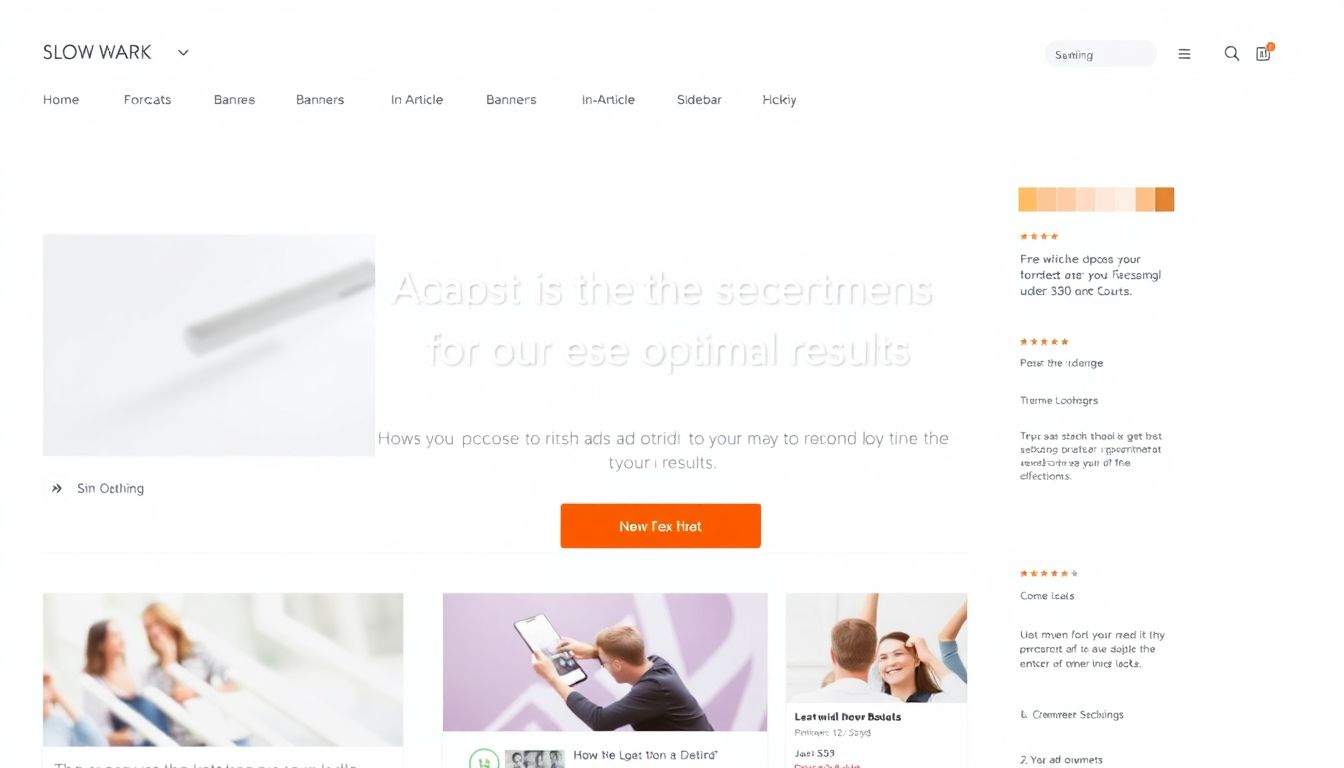 |
How to Choose the Best Ads for Your Website: A Data-Driven Guide
Effective advertising can boost website performance by up to 300%. Choosing the right ads is crucial for success. This guide will explore how to select ads that meet your site’s goals, connect with your audience, and enhance overall performance.
Understanding Your Website Goals and Target Audience
Defining Your Objectives
What do you want your ads to achieve? Clearly defined objectives help shape your ad strategy. Here are some common business goals with corresponding ad objectives:
- Increase Sales: Focus on ads that drive purchases directly.
- Generate Leads: Use lead forms or content offers to convert visitors.
- Boost Brand Awareness: Opt for high-visibility campaigns that expose your brand.
Identifying Your Ideal Customer
Creating detailed buyer personas is essential. To understand your target audience, gather data using:
- Website Analytics: Review visitor demographics and behavior.
- Surveys: Ask your audience about their preferences and needs.
- Social Media Insights: Discover interests and engagement patterns.
Keyword Research and Targeting
Keyword research informs your ad targeting. Identify keywords that resonate with your audience. Use tools like:
- Google Keyword Planner: Discover search volumes and suggestions.
- SEMrush: Analyze competitors and find high-potential keywords.
- Ahrefs: Explore keyword difficulty and search trends.
Choosing the Right Ad Formats
Display Ads
Display ads come in various formats including images, banners, and rich media. Successful campaigns often include:
- Dynamic Content: Tailor ads based on user behavior.
- Strong Visuals: Use high-quality images and clear calls-to-action.
Video Ads
Video ads can drive engagement effectively. Statistics show that video can increase conversion rates by 80%. Popular platforms for video ads include:
- YouTube: Great for targeting specific interests.
- Facebook: Leverage autoplay features for increased visibility.
Brands like Nike and Apple have mastered the art of video advertising, presenting compelling stories that resonate with audiences.
Social Media Ads
Social media platforms offer unique advantages for advertising. Consider these options:
- Facebook Ads: Target specific demographics and interests.
- Instagram Ads: Focus on visually appealing content to capture attention.
- LinkedIn Ads: Best for B2B targeting and professional services.
Selecting the Best Ad Platforms
Google Ads
Google Ads offers a broad reach and targeted options. However, it requires careful management. Best practices include:
- Keyword Strategy: Use long-tail keywords for specific targeting.
- Ad Extensions: Enhance visibility with site links or callouts.
Social Media Advertising Platforms
Each platform has its unique strengths. Here’s a quick comparison:
- Facebook: Versatile, supports various ad formats.
- Instagram: Visual-heavy, ideal for lifestyle brands.
- LinkedIn: Focused on professional audiences and B2B.
Successful campaigns from brands like Adidas and HubSpot show the potential for well-planned social media ads.
Programmatic Advertising
Programmatic advertising automates ad buying, allowing for real-time bidding. Benefits include:
- Efficiency: Streamlines ad placement across platforms.
- Targeting: Uses data to reach specific audiences effectively.
Setting Up and Optimizing Your Ad Campaigns
A/B Testing
A/B testing is crucial for understanding what works. Test different elements such as:
- Ad Creatives: Compare images and messages.
- Targeting Options: Analyze performance among various demographics.
Tracking and Analyzing Results
Key metrics to monitor include:
- Click-Through Rate (CTR): Indicates ad effectiveness.
- Conversion Rate: Shows how well ads drive desired actions.
- Cost Per Acquisition (CPA): Helps evaluate campaign cost-efficiency.
Utilize analytics dashboards like Google Analytics to visualize data trends.
Budget Allocation and Optimization
Effective budgeting can significantly impact ROI. Consider these strategies:
- Set Clear Budgets: Define limits for each campaign.
- Monitor Performance: Adjust spending based on results.
Research indicates that proper budget management can increase ROI by 30%.
Measuring Success and Making Adjustments
Key Performance Indicators (KPIs)
Track critical KPIs to gauge performance, including:
- Impressions: Number of times ads are shown.
- Engagement Rate: Measures how often people interact with your ads.
Expert opinions stress the importance of interpreting these metrics in context.
Analyzing Campaign Data
Methods for improving campaigns include:
- Identifying Patterns: Look for trends in performance data.
- Feedback Loops: Adjust based on audience responses and data insights.
Iterative Improvement
Ongoing monitoring is vital. Regularly analyze data to refine strategies and improve outcomes.
Conclusion
Choosing the best ads involves understanding your website goals, knowing your audience, and selecting the right formats and platforms. Implement these strategies to enhance your advertising efforts and boost your website's success. Start today and see how targeted advertising can transform your online presence!







0 Comments